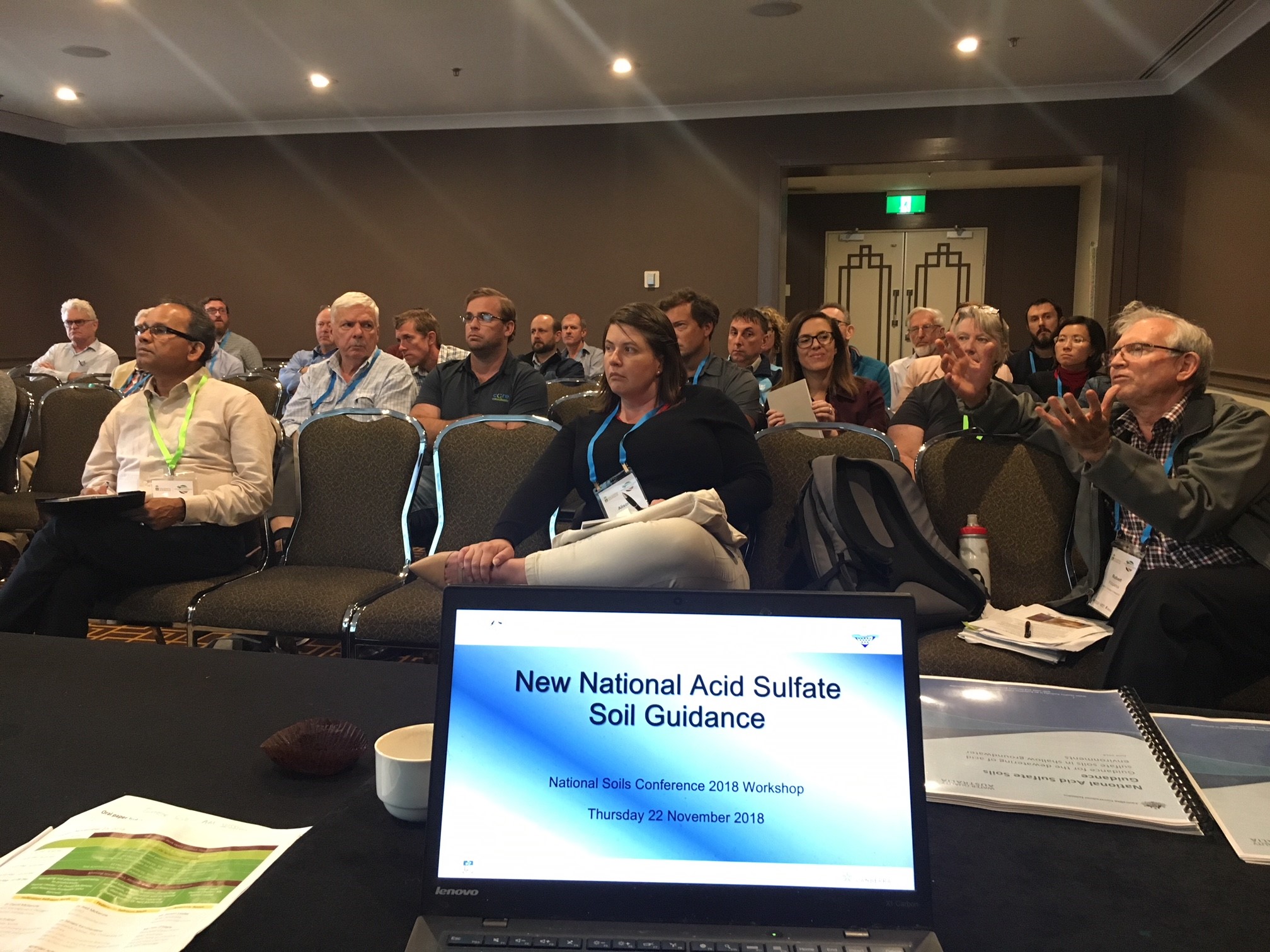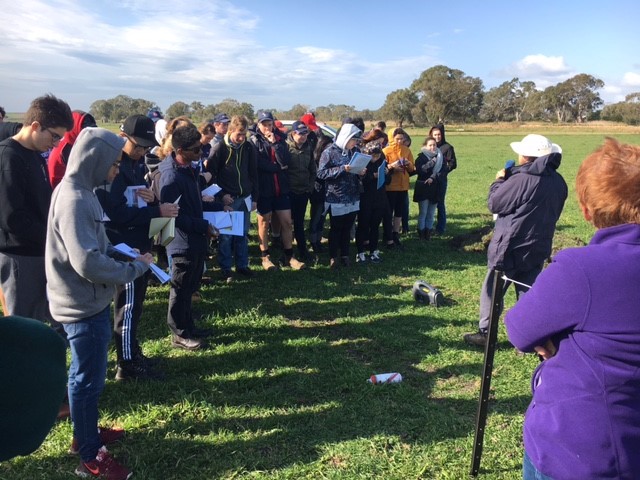News & Events
9th International Acid Sulfate Soils Conference in Adelaide (postponed to Nov 2021 due to the global COVID-19 pandemic)
The 9th International Acid Sulfate Soils Conference is the premier interdisciplinary forum for the presentation of new advances and research results in the fields of acid sulfate soil research, policy and management practices.
The Acid Sulfate Soils Centre is organising the conference to be held in Adelaide in November 2021 which will bring together leading scientists, researchers and managers in this domain of interest from around the world.
The conference has been postponed from the original dates in November 2020 due to the global COVID-19 pandemic.
See our conference website page for more details
Completion of project on assessment of acid sulfate soil risks relating to managed River Murray wetlands
The ASSC recently completed a large project for the Department for Environment and Water (South Australia). The aim of this project was to provide information to assist environmental managers to identify and manage acid sulfate soil risks in River Murray wetlands, in particular those in the Riverine Recovery Project (RRP) and selected sites under the South Australian Riverland Floodplains Integrated Infrastructure Program (SARFIIP).
Acid sulfate soils can have catastrophic impacts on soil, water quality, aquatic ecosystems and water supplies if not managed appropriately. The need for the project arose firstly because there is a limited amount of acid sulfate soil information in current River Murray wetland management plans. Secondly, the new infrastructure and hydrological changes induced in managed wetlands as part of the RRP and SARFIIP (i.e. reintroduction of drying and wetting cycles for improved wetland health) can create potential risks of adverse environmental impacts that arise from acid sulfate soils due to the long term static water management regimes as a result of river regulation. Final reports from the project are listed below:
Mosley L.M., Thomas B.P. and Fitzpatrick R.W. (2019). A Guide to Managing Acid Sulfate Soil Risks in South Australian River Murray Wetlands. Acid Sulfate Soils Centre, University of Adelaide. Acid Sulfate Soils Centre Report: ASSC_155. Weblink to report
Fitzpatrick R.W., Mosley L.M., and Thomas BP (2018). Methods for detailed desktop, field and laboratory characterisation of Acid Sulfate Soils in Managed Wetlands. Acid Sulfate Soils Centre, The University of Adelaide, Acid Sulfate Soils Centre Report: ASSC_154. Weblink to report
Thomas B.P., Fitzpatrick R.W. and Mosley L.M. (2019). Technical Report: Acid Sulfate Soil Assessment for Riverine Recovery Program wetlands. Acid Sulfate Soils Centre Report, University of Adelaide, 322 pp. Weblink to report
The outcomes of this work is now being used to inform new River Murray wetland and floodplain acid sulfate assessment projects in Victoria and New South Wales.
Workshop on New National Acid Sulfate Soil Guidance Material
A workshop was held at the National Soils Conference in Canberra in November 2018. The aim was to provide an introduction and overview to the new National Acid Sulfate Soil Guidance Manuals. The Australian Government, state and territory governments and the National Committee for Acid Sulfate Soils (NATCASS) has recently released a suite of new resources (see link to website with guidance material). This new guidance material provides clear, non-prescriptive advice for managing acid sulfate soils based on current scientific knowledge and complements existing jurisdictional and national guidance material.

Publication of the Geoderma Special Issue of papers presented at the 8th International Acid Sulfate Soils Conference (Maryland, U.S.A.)
A Special Issue of Acid Sulfate Soil papers has been published in Geoderma and includes 16 contributions organized within the following four themes that were used at the 8th International Acid Sulfate Soils Conference held at the University of Maryland, College Park, USA from 17–23 July 2016:
- Introduction and Background to Acid Sulfate Soils
- Sulfidization
- Sulfuricization (included the special symposium dedicated to the late Professor Udo Schwertmann)
- Assessment and Remediation
The Managing Guest Editor, Martin Rabenhorst and Guest Editors Lee Daniels and Rob Fitzpatrick prepared a Preface, which provides a summary of the conference and highlights of the 16 papers.
The following series of 6 papers on Acid Sulfate Soils authored and/or co-authored by staff from the Acid Sulfate Soils Centre are included in the Geoderma Special Issue:
- Rabenhorst, Martin, Daniels L., and Fitzpatrick Robert (2017) Preface: 8th International Acid Sulfate Soil Conference. Geoderma. 308, 187-190. http://dx.doi.org/10.1016/j.geoderma.2017.09.022
- Fanning, Delvin, Rabenhorst, Martin and Fitzpatrick Robert (2017) Historical developments in the understanding of acid sulfate soils. Geoderma. 308, 191-206. http://dx.doi.org/10.1016/j.geoderma.2017.07.006
- Fitzpatrick, RW, Shand P and Mosley LM (2017). Acid sulfate soil evolution models and pedogenic pathways during drought and reflooding cycles in irrigated areas and adjacent natural wetlands. Geoderma. 308, 270-290. http://dx.doi.org/10.1016/j.geoderma.2017.08.016
- Fitzpatrick, RW, Mosley LM, Raven MD and Shand P (2017) Schwertmannite formation and properties in acidic drain environments following exposure and oxidation of acid sulfate soils in irrigation areas during extreme drought. Geoderma. 308, 235-251. http://dx.doi.org/10.1016/j.geoderma.2017.08.012
- Mosley, LM, Biswas T, Cook F., Marschner P, Palmer D, Shand P, Yuan C, and Fitzpatrick RW (2017) Prolonged recovery of acid sulfate soils with sulfuric materials following severe drought: causes and implications. Geoderma. 308, 312-320. http://dx.doi.org/10.1016/j.geoderma.2017.03.019
- Kölbl, A, Marschner P., Fitzpatrick, RW, Mosley LM, and Kögel-Knabner, I. (2017). Linking organic matter composition in acid sulfate soils to acidification risk and recovery. Geoderma. 308, 350-362 http://dx.doi.org/10.1016/j.geoderma.2017.07.03
Training the next generation of agricultural scientists on acid sulfate soils
Prof. Rob Fitzpatrick and Dr Luke Mosley gave a presentation on acid sulfate soils and their management to 3rd Year Agricultural Science Students on 18 September 2017 at Long Flat Irrigation Area trial site. This is our main research trial site in this region established with the EPA in 2011 and the research has generated many important scientific insights and greatly assisted the State Government and Murray-Darling Basin Authority in managing the issue. See this short video of Prof. Fitzpatrick giving the students a basic introduction to acid sulfate soils.

ARC Discovery Grant award
In November 2016, the Acid Sulfate Soils Centre was awarded a prestigious Australian Research Council (ARC) Discovery Grant (lead investigator Prof. Rob Fitzpatrick) for a project titled “Extreme soil acidification and metal release risks from increasing drought due to climate change”.
The project aims to study the effects of drought on pH and metal speciation in soils, and develop tools to assess current and future risks.
Social and economic well-being depends on good soil and water quality. Climate change makes droughts more frequent and severe, which could cause soil acidification (pH<4) and metal release in many regions.
The project will integrate experimental data on the effects of drought on soil geochemistry with hydro-geochemical models, and apply these to national-scale predictions.
The intended outcomes are improved management and preparedness for droughts and new research directions for geochemistry.
Citizen Science in the Lower Lakes
Drought culminating in 2009 in the Murray–Darling Basin put severe downstream pressure on Lakes Alexandrina and Albert (“Lower Lakes”) in South Australia.
Falling water levels caused sulfidic acid sulfate soils (ASS) to dry forming sulfuric ASS (pH < 4) in lakebeds, along with environmental, economic and public health concerns.
The pace of sulfuric ASS spread overwhelmed scientific efforts to develop robust hydrogeochemical models for the best management decisions.
Meanwhile, community impatience grew because of fears for livelihoods, public health and loss of recreational amenity and exacerbated by apparent slow pace of government response caused by lagging scientific support.
Responding to the looming problems, government, community and scientists joined in a citizen science project.
The project comprised a programme of community ASS education, training and a field sampling programme conducted over four intervals (August 2009–June 2010).
The project attracted 84 volunteers who sampled 51 survey areas covering the full range of ASS. The citizen scientists allowed a wider geographic and temporal sampling reach than was otherwise possible by scientists alone. The citizen scientists amplified the work of scientists by adding to the pool of data and freeing scientists to concentrate on non-routine ASS work.
Perhaps of more enduring importance, the project showed how community, government and scientists can cooperate at times of environmental stress. The experience has grown government’s capability to implement policy to grow community resilience during environmentally stressful episodes.
Finally, the Lower Lakes community is now positioned for the next drought because community knowledge, leadership and networks are now in place.
Read more: Mobilising citizen scientists to monitor rapidly changing acid sulfate soils.
An excellent news article out about one of our current research projects helping primary producers and the State Government manage acid sulfate soils in the Lower Murray.
